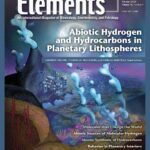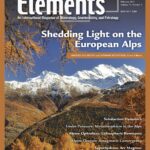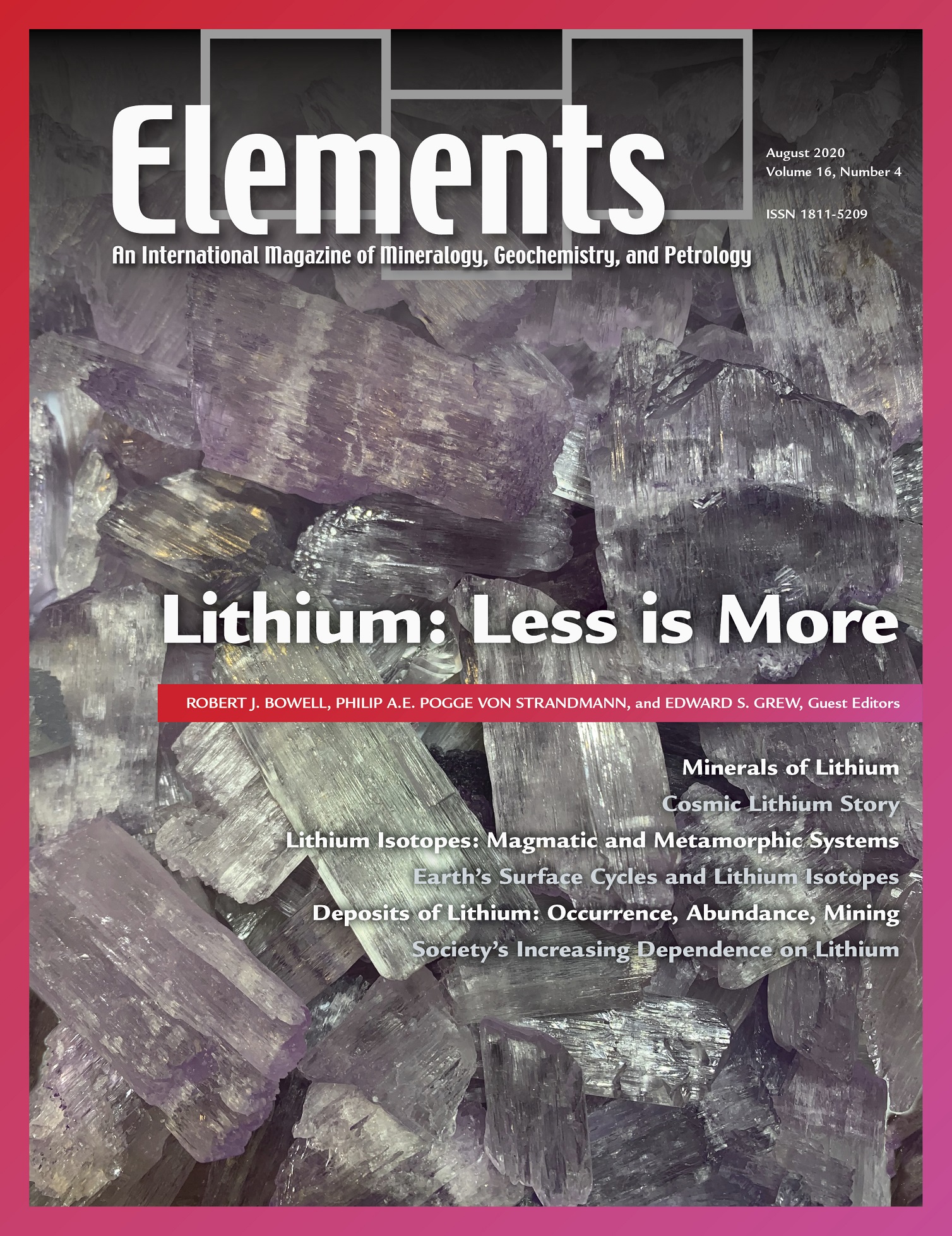
Abiotic Hydrogen And Hydrocarbons In Planetary Lithospheres, February 2020, Vol. 16, No. 1
June 28, 2024
Shedding Light On The European Alps, February 2021, Vol. 17, No. 1
June 28, 2024Lithium: Less Is More, August 2020, Vol. 16, No. 4
$20.00
Lithium is concentrated in Earth’s upper continental crust and is an essential constituent of 122 mineral species with the greatest mineralogical diversity found in pegmatites. Lithium occurs naturally in two isotopes, 6Li and 7Li, which are readily fractionated, thus becoming sensitive to geological and environmental processes.
Lithium: Less Is More
August 2020, Vol. 16, No. 4
Lithium is concentrated in Earth’s upper continental crust and is an essential constituent of 122 mineral species with the greatest mineralogical diversity found in pegmatites. Lithium occurs naturally in two isotopes, 6Li and 7Li, which are readily fractionated, thus becoming sensitive to geological and environmental processes. Closed-basin brines (58%) and pegmatites plus related granites (26%) constitute the main sources of exploitable lithium worldwide. Rechargeable batteries that take advantage of lithium’s light weight and high electrochemical potential offer the greatest potential benefit to the most people. Lithium compounds are also used to control bipolar disorder. In a word, life as we know it at the start of the 21st century would not be possible without lithium.
Why You’ll Love Elements Magazine:
- Expert Contributors: Articles written by renowned researchers in the field of geoscience.
- Engaging Content: Join a community of readers who are passionate about Elements.
- Exceptional Quality: Each issue is printed on high-quality paper with stunning visuals and detailed illustrations that bring complex scientific concepts to life.
Order your copy of the August 2020 issue of Elements magazine today and discover lithium: less is more.
Related products
-
Early Earth, August 2006, Vol. 2, No. 4
$20.00The earliest Earth was a strange inhospitable world, yet transitions occurred culminating in the evolution of life within the first billion years. The preservation of a sparse and ambiguous rock record has encouraged debate.
-
Glasses And Melts: Linking Geochemistry And Materials Science, October 2006, Vol. 2, No. 5
$20.00Geological interest in studying melts stems from early recognition that melts play a fundamental role in determining the physical and chemical behaviour of magmas and magmatic processes. However, due to the inherent difficulties associated with working at high temperatures, much of the geological research over the last 30 years has used quenched melts or glasses as proxies for melts themselves.
-
Supervolcanoes, February 2008, Vol. 4, No. 1
$20.00Explosive super-eruptions from large volume, shallow magma systems lead to enormous and devastating pyroclastic flows, the formation of gigantic collapse calderas, and deposition of volcanic ash over continent-sized areas. Recognition that future eruptions from these “supervolcanoes” will undoubtedly have severe impacts on society—and perhaps on life itself—has led to recent public and media interest.




